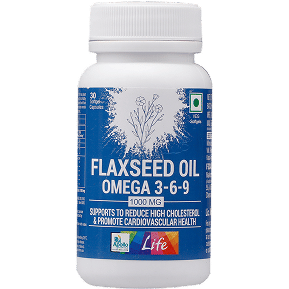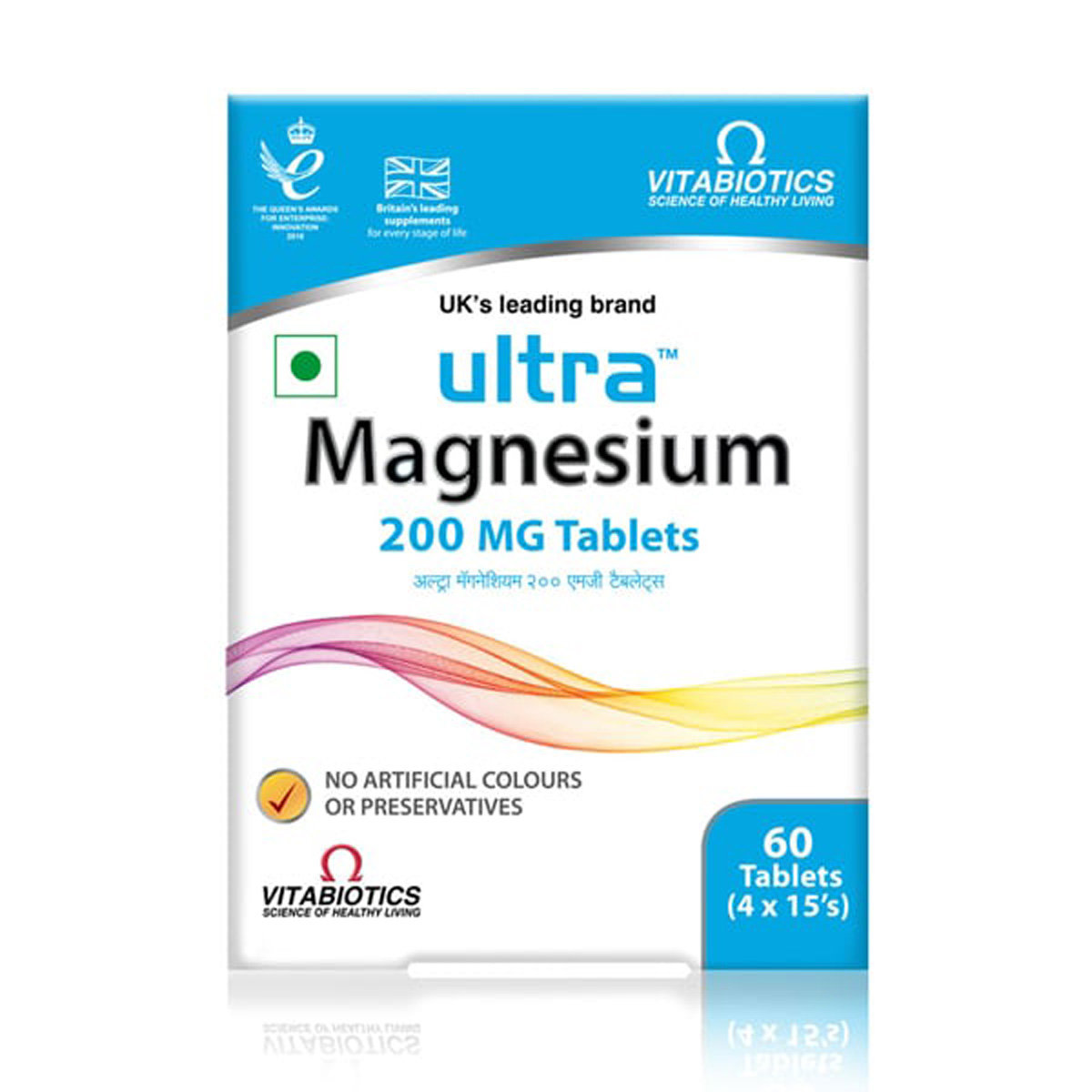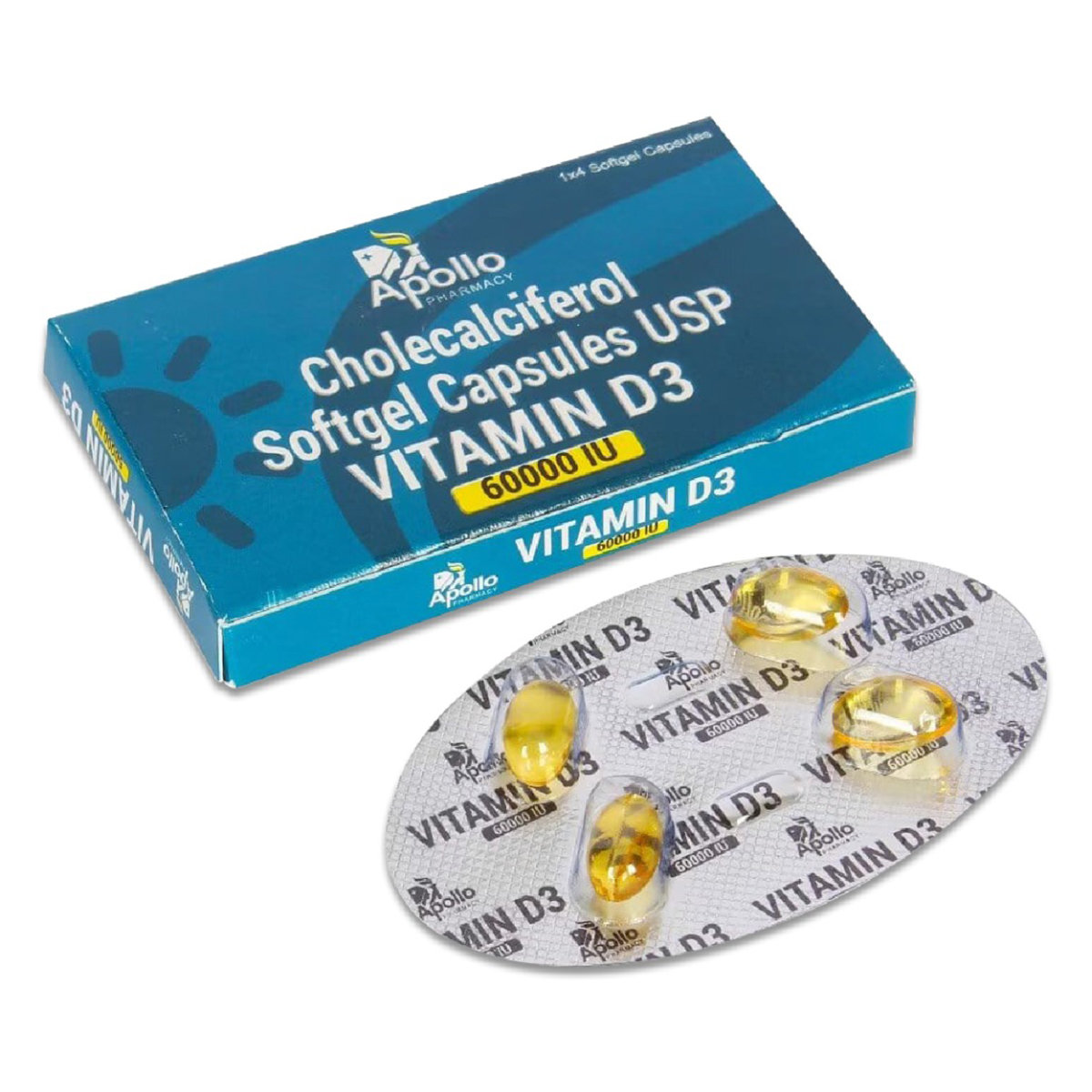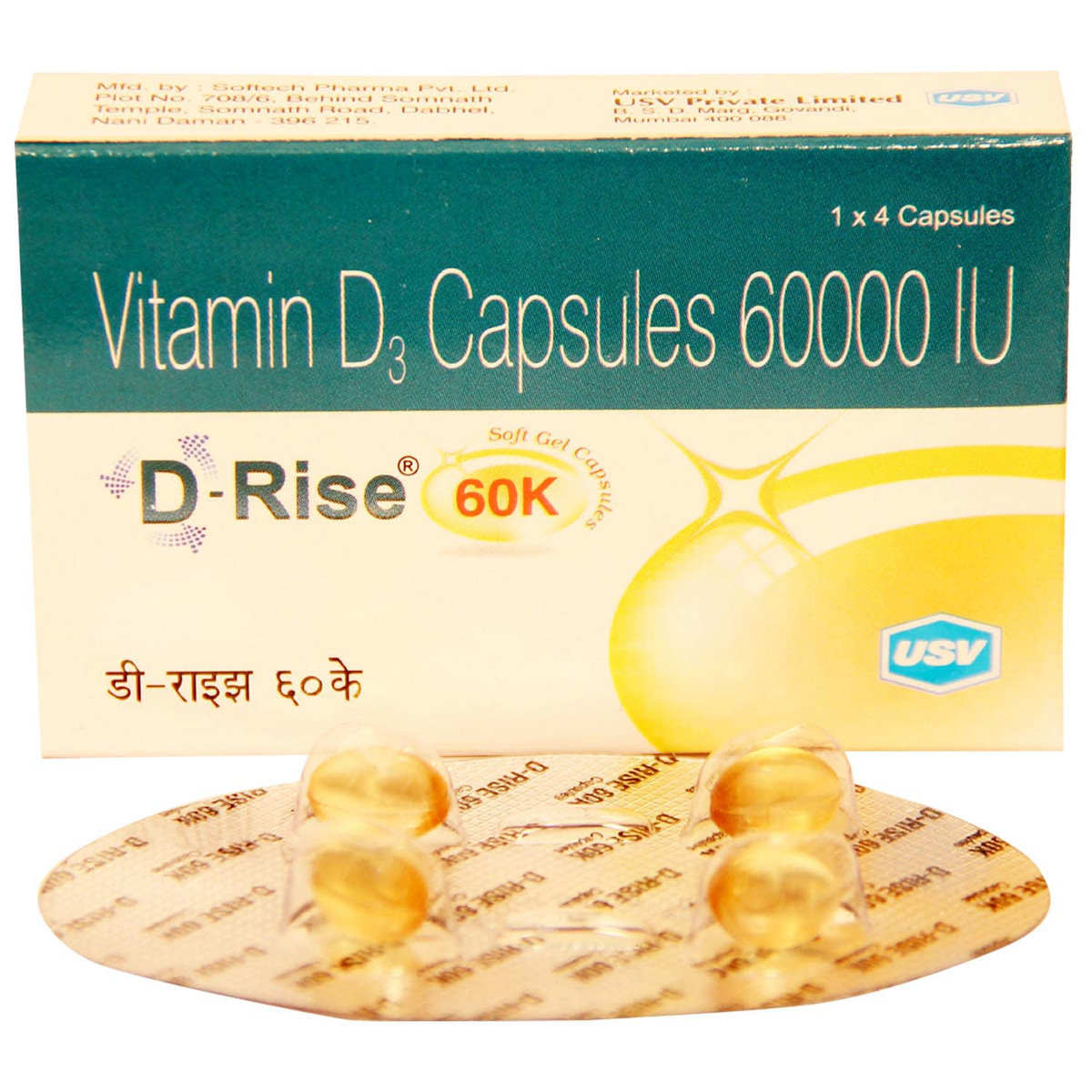Meftal-500 Tablet
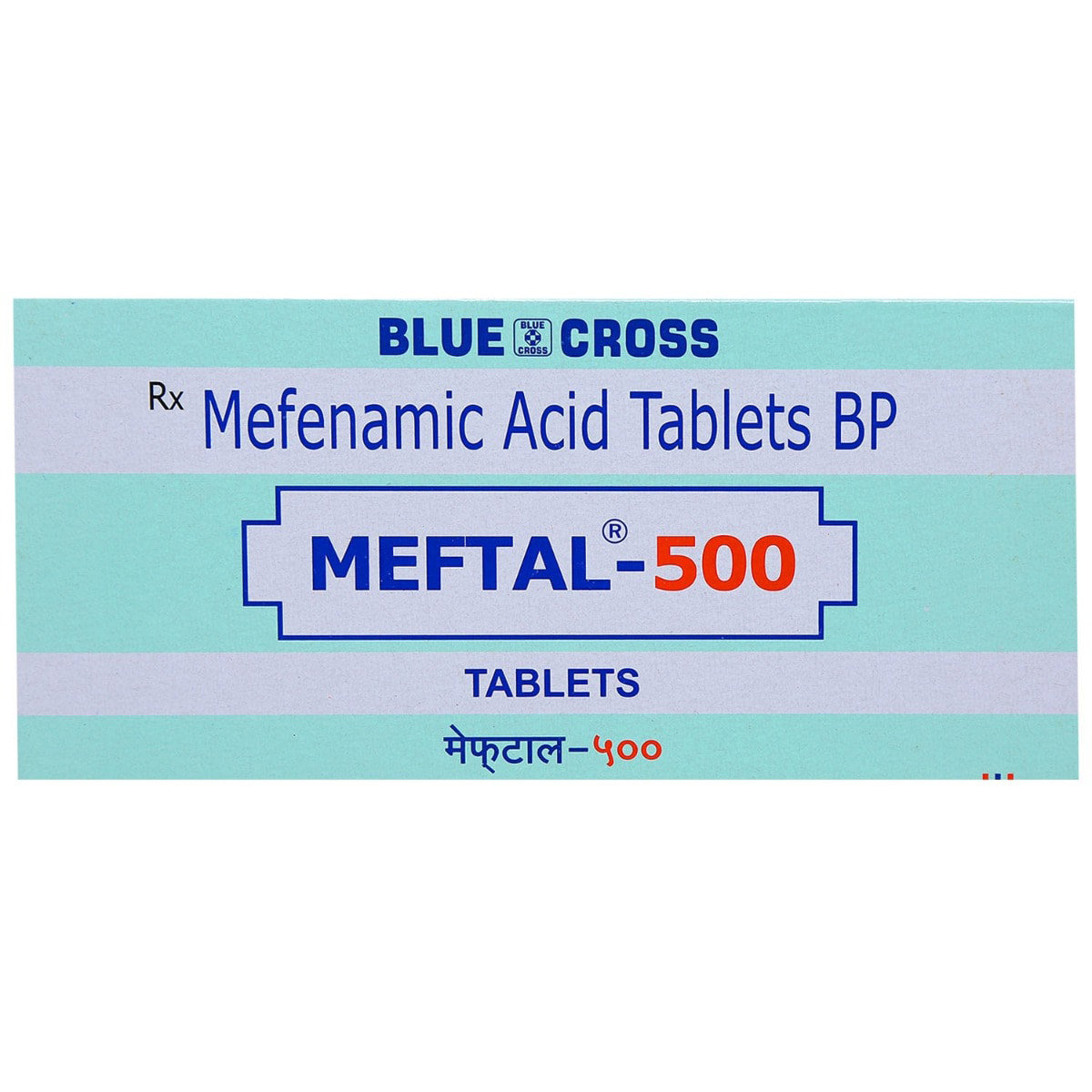
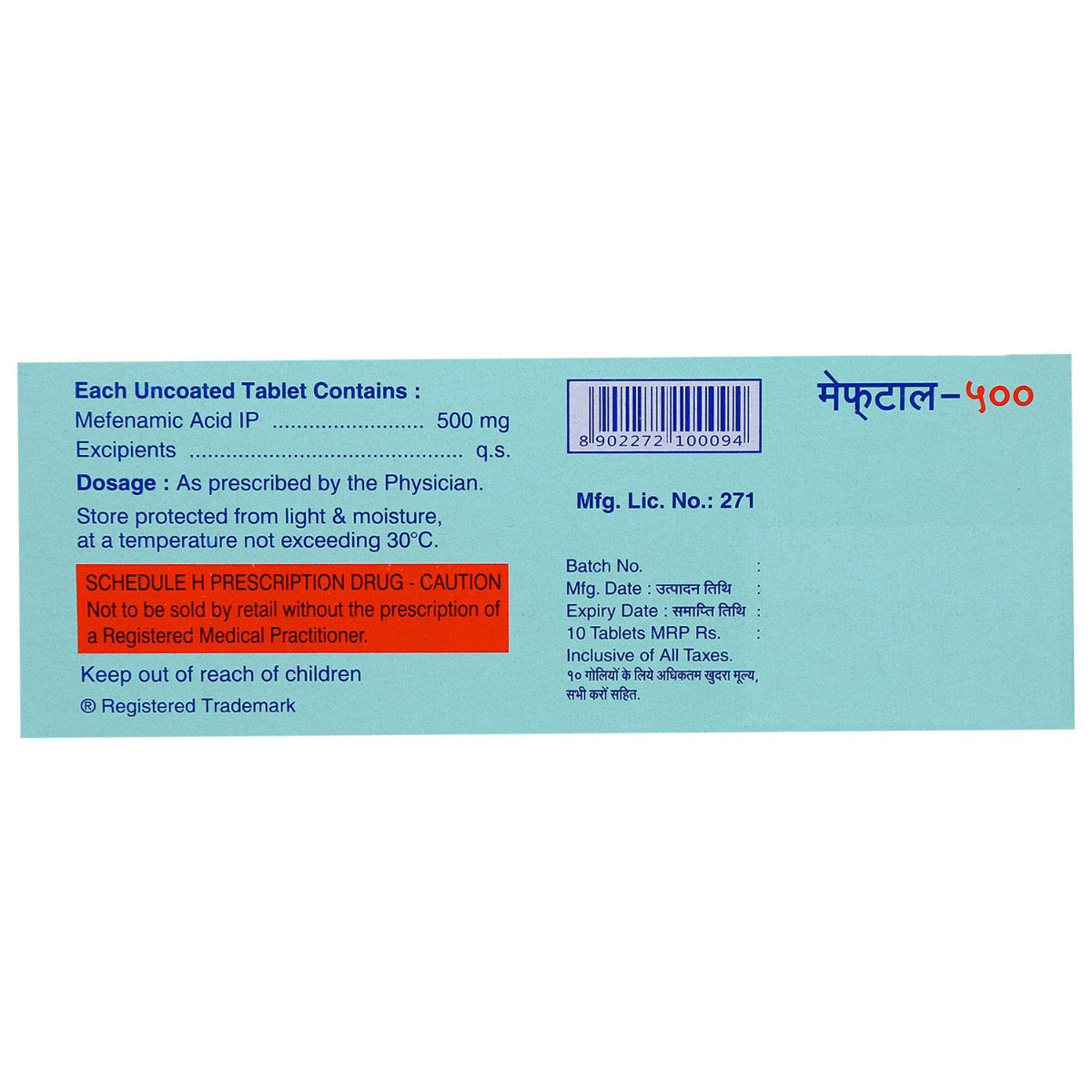
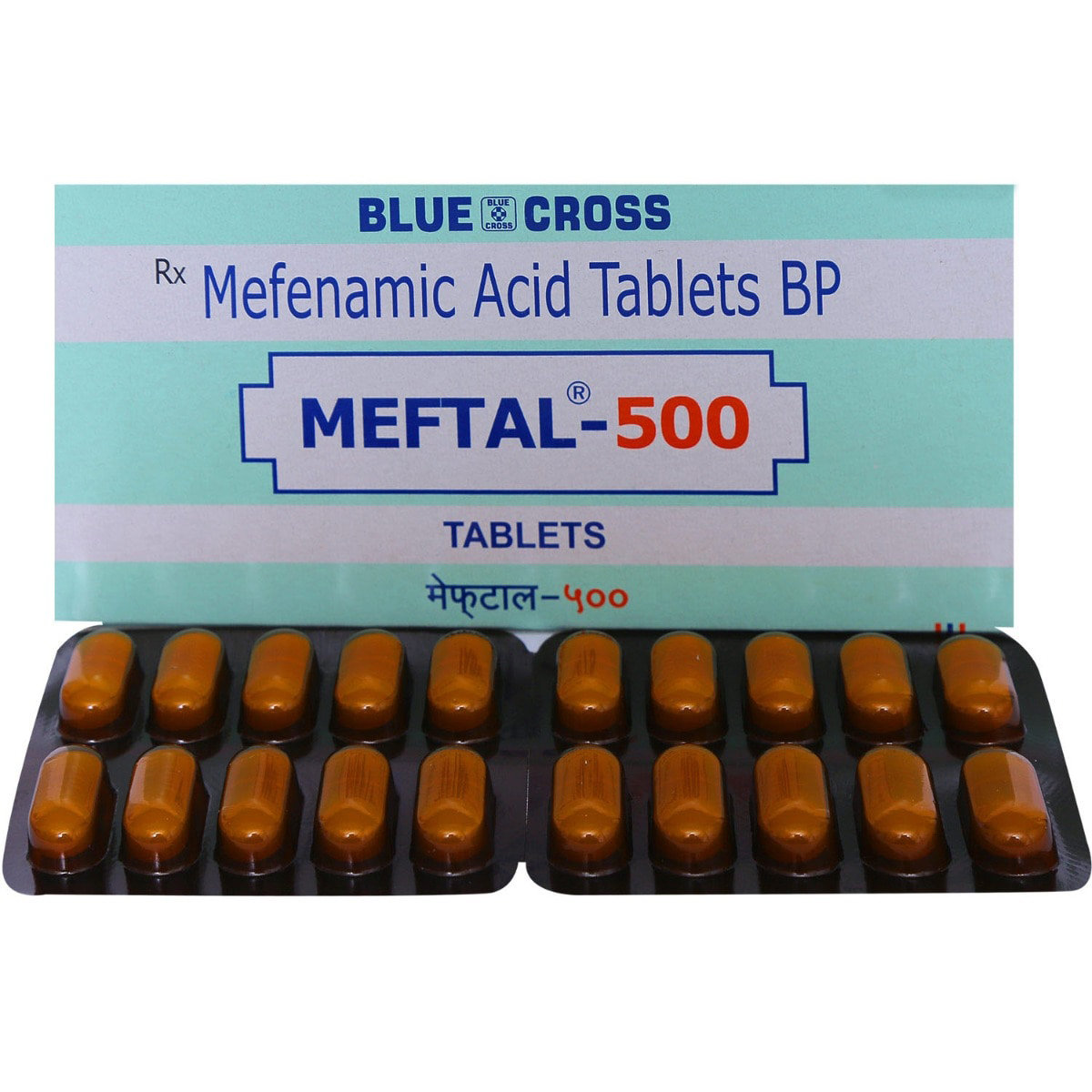
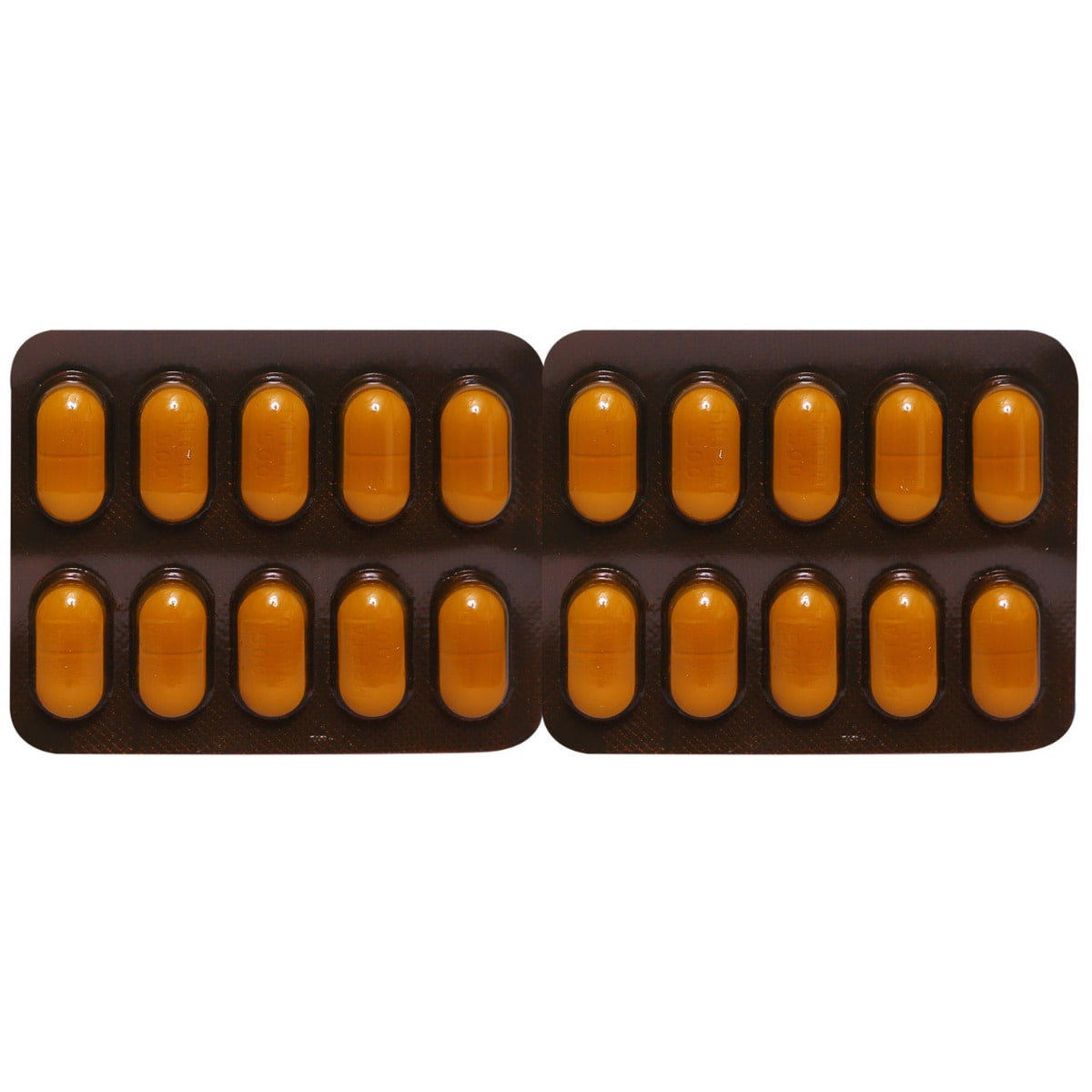
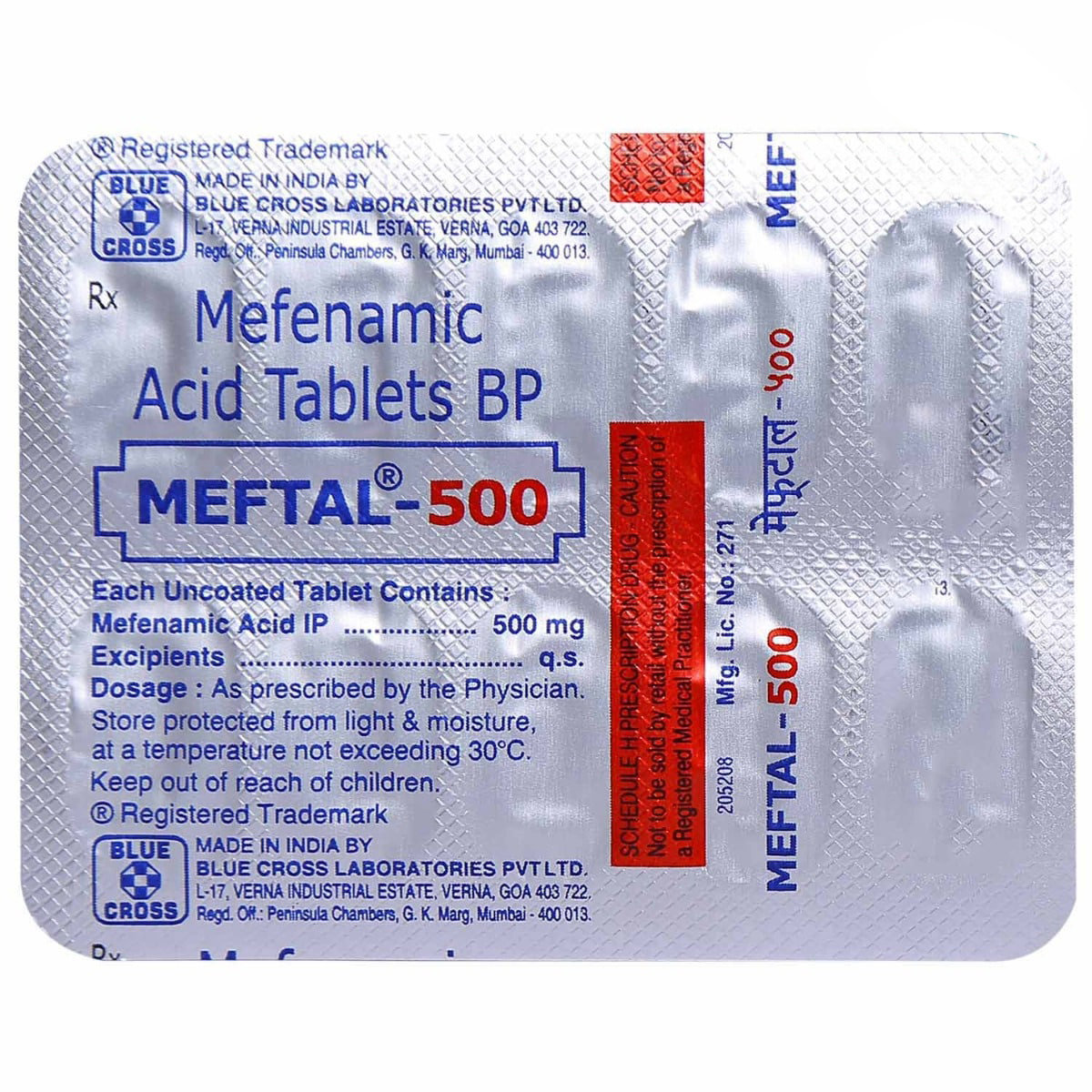
MRP ₹31.5
(Inclusive of all Taxes)
₹4.7 Cashback (15%)
know your delivery time
Provide Delivery Location
Composition :
Manufacturer/Marketer :
Consume Type :
Expires on or after :
Return Policy :

Secure Payment

Trusted by 8 Crore Indians

Genuine Products
Therapeutic Class
Country of origin
Manufacturer/Marketer address
Author Details
We provide you with authentic, trustworthy and relevant information
Disclaimer
Alcohol
Safe if prescribed
Avoid consumption of alcohol while taking Meftal-500 Tablet as it may increase drowsiness. It can also increase the risk of stomach bleeding.
Pregnancy
Consult your doctor
Meftal-500 Tablet belongs to pregnancy category C. Please consult your doctor if you are pregnant or planning for pregnancy. Your doctor will prescribe only if the benefits outweigh the risks.
Breast Feeding
Consult your doctor
Meftal-500 Tablet may pass into breastmilk. Consult your doctor if you are breastfeeding.
Driving
Safe if prescribed
Meftal-500 Tablet may cause dizziness and drowsiness. Do not drive or operate machinery unless you are alert.
Liver
Consult your doctor
Dose adjustment may be needed in patients with liver impairment. Please consult your doctor if you have a liver impairment or any concerns regarding this.
Kidney
Consult your doctor
Dose adjustment may be needed in patients with kidney impairment. Please consult your doctor if you have kidney impairment or any concerns regarding this.
Children
Safe if prescribed
Please consult your doctor. Your doctor will recommend it based on your child's condition.
Product Substitutes
About Meftal-500 Tablet
Meftal-500 Tablet belongs to a group of NSAIDs (Non-Steroidal Anti-Inflammatory Drugs) used to provide relief from mild to moderate pain and inflammation associated with muscular, rheumatic, and arthritic disorders, headache, trauma, dental pain, and pain after surgery or childbirth. Additionally, Meftal-500 Tablet is used to relieve period pain, and premenstrual syndrome symptoms (PMS), and manage excessively heavy periods.
Meftal-500 Tablet contains 'mefenamic acid' which works by blocking the effect of chemical messengers that cause pain and inflammation. Thereby relieving pain and inflammation.
In some cases, you may experience certain common side effects such as abdominal pain, nausea, vomiting, diarrhoea, heartburn and indigestion. Most of these side effects do not require medical attention and will resolve gradually over time. However, you are advised to talk to your doctor if you experience these side effects persistently.
Consult your doctor if you are pregnant or breastfeeding. Meftal-500 Tablet may cause drowsiness and dizziness, so drive only if you are alert. Avoid consuming alcohol with Meftal-500 Tablet as it could lead to increased drowsiness and dizziness; it might also increase stomach bleeding risk. Keep your doctor informed about your health condition and medicines to rule out any side effects.
Uses of Meftal-500 Tablet
Medicinal Benefits Mweb
Key Benefits
Meftal-500 Tablet belongs to a group of medicines called NSAID (Non-Steroidal Anti-Inflammatory Drug) used to provide relief from mild to moderate pain and inflammation associated with muscular, rheumatic, arthritic disorders, headache, trauma, dental pain, and pain after surgery or childbirth. Additionally, Meftal-500 Tablet is used to relieve period pain, symptoms of premenstrual syndrome (PMS), and management of excessively heavy periods. Meftal-500 Tablet works by blocking the effect of a chemical messenger in your body, known as cyclo-oxygenase (COX) enzymes that make another chemical prostaglandins. These prostaglandins are produced at injury sites and cause pain and swelling. By blocking the effect of COX enzymes, lesser prostaglandins are produced, which reduces mild to moderate pain and inflammation at the injured or damaged site.
Directions for Use
Side Effects of Meftal-500 Tablet
- Abdominal pain
- Nausea
- Vomiting
- Diarrhoea
- Indigestion
- Heartburn
Drug Warnings
Do not take Meftal-500 Tablet if you are allergic to any of its components, if you have severe heart, kidney or liver failure, suffered bleeding problems such as bleeding from the stomach or bowels while taking any pain killers or have peptic ulcers or inflammatory bowel disease. Inform your doctor if you have high blood pressure, heart problems, high cholesterol, dehydration, asthma, liver and kidney problems. Consult your doctor if you are pregnant or breastfeeding. Meftal-500 Tablet may cause drowsiness and dizziness, so drive only if you are alert. Stop taking Meftal-500 Tablet and consult your doctor immediately if you have stomach pain or any signs of bleeding in the intestine or stomach such as blood in stools.
Drug-Drug Interactions
Drug-Drug Interactions
Login/Sign Up
Coadministration of Meftal-500 Tablet with Ketorolac can increase the risk or severity of gastric bleeding and ulcers.
How to manage the interaction:
Taking Meftal-500 Tablet with Ketorolac together can result in an interaction, it can be taken if your doctor has advised it. However, if you notice any unusual bleeding or bruising, other signs of bleeding, dizziness, lightheadedness, red or black tarry stools, coughing up or vomiting blood, severe headache, and weakness, you should contact a doctor immediately. Do not stop using any medications without talking to a doctor.
Co-administration of Meftal-500 Tablet with Meloxicam together can increase the risk or severity of bleeding.
How to manage the interaction:
Taking Meftal-500 Tablet with Meloxicam together is generally avoided as it can result in an interaction, it can be taken if a doctor has advised it. However, if you notice any unusual bleeding or bruising, other signs of bleeding, dizziness, lightheadedness, red or black tarry stools, coughing up or vomiting blood, severe headache, and weakness, you should contact a doctor immediately. Do not stop using any medications without talking a doctor.
Co-administration of Meftal-500 Tablet with Flurbiprofen can increase the risk or severity of gastric bleeding, ulceration, and rarely, perforation leading to serious blood loss.
How to manage the interaction:
Taking Meftal-500 Tablet with Flurbiprofen together can result in an interaction, it can be taken if your doctor has advised it. However, if you notice any symptoms of dizziness, lightheadedness, unusual bleeding or bruising, red or black tarry stools, coughing up or vomiting blood, severe headache, and weakness, you should contact a doctor immediately. Do not stop using any medications without talking to a doctor.
Taking Human immunoglobulin with Meftal-500 Tablet, may raise the risk of kidney problems.
How to manage the interaction:
There may be a possibility of interaction between Human immunoglobulin and Meftal-500 Tablet, but it can be taken if prescribed by a doctor. However, if you experience nausea, vomiting, loss of appetite, increased or decreased urination, sudden weight gain or loss, fluid retention, swelling, shortness of breath, muscle cramps, tiredness, weakness, dizziness, confusion, or an irregular heart rhythm, consult a doctor. Do not discontinue any medications without consulting a doctor.
Teriflunomide may cause liver damage and taking it with Meftal-500 Tablet may increase that risk.
How to manage the interaction:
Although taking Meftal-500 Tablet and Teriflunomide together can cause an interaction, it can be taken if your doctor has suggested it. If you have any of these symptoms, it's important to contact your doctor right away - liver problems, fever, feeling cold, pain in your joints, swelling, bruises, rash, itchy skin, not feeling hungry, feeling tired, feeling sick, throwing up, dark urine, or bleeding. Do not discontinue any medications without consulting a doctor.
Coadministration of Meftal-500 Tablet with Deferasirox can increase the risk or severity of gastric bleeding.
How to manage the interaction:
Taking Meftal-500 Tablet with Deferasirox together can result in an interaction, it can be taken if your doctor has advised it. However, if you notice any symptoms of increased or decreased urination, fluid retention, swelling, shortness of breath, muscle cramps, tiredness, weakness, dizziness, confusion, and irregular heart rhythm, you should contact a doctor immediately. Do not stop using any medications without talking to a doctor.
The combined use of Meftal-500 Tablet and Tenofovir alafenamide can increase the risk of kidney problems.
How to manage the interaction:
Taking Meftal-500 Tablet and Tenofovir alafenamide together can lead to an interaction, it can be taken if advised by your doctor. However, if you experience any symptoms like nausea, vomiting, loss of appetite, increased or decreased urination, sudden weight gain or weight loss, fluid retention, swelling, shortness of breath, bone pain, muscle cramps, tiredness, weakness, dizziness, confusion, and irregular heart rhythm, contact a doctor immediately. Do not discontinue any medications without consulting a doctor.
Co-administration of Meftal-500 Tablet with Ibrutinib can increase the risk or severity of bleeding, leading to serious blood loss.
How to manage the interaction:
Taking Meftal-500 Tablet with Ibrutinib together can result in an interaction, it can be taken if a doctor has advised it. However, if you notice any symptoms of unusual bleeding or bruising, dizziness, lightheadedness, red or black tarry stools, coughing up or vomiting blood, severe headache, and weakness, you should contact a doctor immediately. Do not stop using any medications without talking to a doctor.
Coadministration of Meftal-500 Tablet with Dabigatran can increase the risk or severity of bleeding leading to serious blood loss.
How to manage the interaction:
Taking Meftal-500 Tablet with Dabigatran etexilate together can result in an interaction, it can be taken if your doctor has advised it. However, if you notice any unusual bleeding or bruising, other signs of bleeding, dizziness, lightheadedness, red or black tarry stools, coughing up or vomiting blood, severe headache, and weakness, you should contact a doctor immediately. Do not stop using any medications without talking to a doctor.
Coadministration of Meftal-500 Tablet with Methotrexate may increase the blood levels and side effects of methotrexate.
How to manage the interaction:
Although there is a possible interaction between Meftal-500 Tablet and methotrexate, you can take these medicines together if prescribed by your doctor. However, if you experience any symptoms such as nausea, vomiting, diarrhea, rash, appetite loss, joint pain or swelling, yellowing of the skin or eyes, dark urine, breathing difficulty, a dry cough, dizziness or fainting, unusual bruising or bleeding, seizures(fits), mouth sores or ulcers, infection, as well as flu-like symptoms(fever, chills, body pains, sore throat, and weakening of the muscles), consult a doctor immediately. Do not stop using medications without a doctor's advice.
Drug-Food Interactions
Drug-Food Interactions
Login/Sign Up
Drug-Diseases Interactions
Drug-Diseases Interactions
Login/Sign Up
Drug-Drug Interactions Checker List
- ASPIRIN
- IBUPROFEN
- CELECOXIB
- DICLOFENAC
- NAPROXEN
- PROBENECID
- CYCLOSPORINE
- TACROLIMUS
- WARFARIN
- HEPARIN
- METHOTREXATE
- ZIDOVUDINE
- DULOXETINE
- LITHIUM
- FLUOXETINE
- SERTRALINE
- MIFEPRESTONE
Habit Forming
Diet & Lifestyle Advise
- Mild exercises such as jogging and walking are helpful for muscle stretching.
- Massages can also be helpful.
- Avoid freezing and hot temperatures.
- Avoid wearing tight-fitting clothes, instead, wear loose garments.
- Rest well, get plenty of sleep.
- To avoid developing pressure sores, change your position at least every two hours.
- Hot or cold therapy can help treat pain. Apply an ice-pack or hot-pack on the muscle for 15-20minutes.
- Stay hydrated, drink plenty of water.
All Substitutes & Brand Comparisons
RX
Out of StockMeflup 500mg Tablet
Lupin Ltd
₹8.26
(₹0.74 per unit)
73% CHEAPERRX
Out of StockMictal-500mg Tablet 10's
Biochem Pharmaceutical Industries Ltd
₹25.5
(₹2.3 per unit)
19% CHEAPERRX
Out of StockMeflan 500mg Tablet
Lancer Pharmaceuticals Pvt Ltd
₹27
(₹2.43 per unit)
14% CHEAPER

Have a query?
Buy best C.n.s Drugs products by
Intas Pharmaceuticals Ltd
Sun Pharmaceutical Industries Ltd
Torrent Pharmaceuticals Ltd
Alkem Laboratories Ltd
Abbott India Ltd
Cipla Ltd
Alteus Biogenics Pvt Ltd
Micro Labs Ltd
Lupin Ltd
Ipca Laboratories Ltd
D D Pharmaceuticals Pvt Ltd
Icon Life Sciences
Mankind Pharma Pvt Ltd
Tripada Healthcare Pvt Ltd
Arinna Lifesciences Ltd
Linux Laboratories Pvt Ltd
East West Pharma India Pvt Ltd
La Renon Healthcare Pvt Ltd
Talent India Pvt Ltd
Tas Med India Pvt Ltd
Zydus Healthcare Ltd
Cnx Health Care Pvt Ltd
Eris Life Sciences Ltd
Leeford Healthcare Ltd
Emcure Pharmaceuticals Ltd
Macleods Pharmaceuticals Ltd
Sigmund Promedica
Aristo Pharmaceuticals Pvt Ltd
Dr Reddy's Laboratories Ltd
Troikaa Pharmaceuticals Ltd
Consern Pharma Ltd
Zydus Cadila
Shine Pharmaceuticals Ltd
Wockhardt Ltd
Ardent Life Sciences Pvt Ltd
Crescent Formulations Pvt Ltd
Theo Pharma Pvt Ltd
Reliance Formulation Pvt Ltd
Ikon Pharmaceuticals Pvt Ltd
Propel Healthcare
Neon Laboratories Ltd
Jagsam Pharma
Msn Laboratories Pvt Ltd
Morepen Laboratories Ltd
Pulse Pharmaceuticals
Sanofi India Ltd
Med Manor Organics Pvt Ltd
Hetero Healthcare Pvt Ltd
Novartis India Ltd
Crescent Therapeutics Ltd
Elder Pharmaceuticals Ltd
Solvate Laboratories Pvt Ltd
Akumentis Healthcare Ltd
Mova Pharmaceutical Pvt Ltd
Psyco Remedies Ltd
Tripada Lifecare Pvt Ltd
Ajanta Pharma Ltd
Cyrus Remedies Pvt Ltd
Medishri Healthcare Pvt Ltd
Cadila Healthcare Ltd
Glenmark Pharmaceuticals Ltd
Matteo Health Care Pvt Ltd
Hbc Life Sciences Pvt Ltd
Lyf Healthcare
Matias Healthcare Pvt Ltd
Mesmer Pharmaceuticals
Alembic Pharmaceuticals Ltd
Capital Pharma
Crescent Pharmaceuticals
Medopharm Pvt Ltd
Alniche Life Sciences Pvt Ltd
Kivi Labs Ltd
Talin Remedies Pvt Ltd
USV Pvt Ltd
Quince Lifesciences Pvt Ltd
Solis Pharmaceuticals
Infivis Life Care
Zuventus Healthcare Ltd
Cadila Pharmaceuticals Ltd
Pfizer Ltd
Wallace Pharmaceuticals Pvt Ltd
A N Pharmacia Laboratories Pvt Ltd
Blue Cross Laboratories Pvt Ltd
Jenburkt Pharmaceuticals Ltd
Lia Life Sciences Pvt Ltd
Mano Pharma
Medley Pharmaceuticals Ltd
Primus Remedies Pvt Ltd
FDC Ltd
Maneesh Pharmaceuticals Ltd
Apex Laboratories Pvt Ltd
Gagnant Healthcare Pvt Ltd
Ozone Pharmaceuticals Ltd
RPG Life Sciences Ltd
Strides Shasun Ltd
Unichem International
GlaxoSmithKline Pharmaceuticals Ltd
Kuresys Labs Pvt Ltd
LA Pharma
Trion Pharma India Llp
Frequently Bought Together
₹176
MRP ₹195.5
10% off
1
+₹279.5
MRP ₹310.5
10% off
1
+₹135.6
MRP ₹154.5
12% off
6
+
_0.jpg?tr=q-85)






